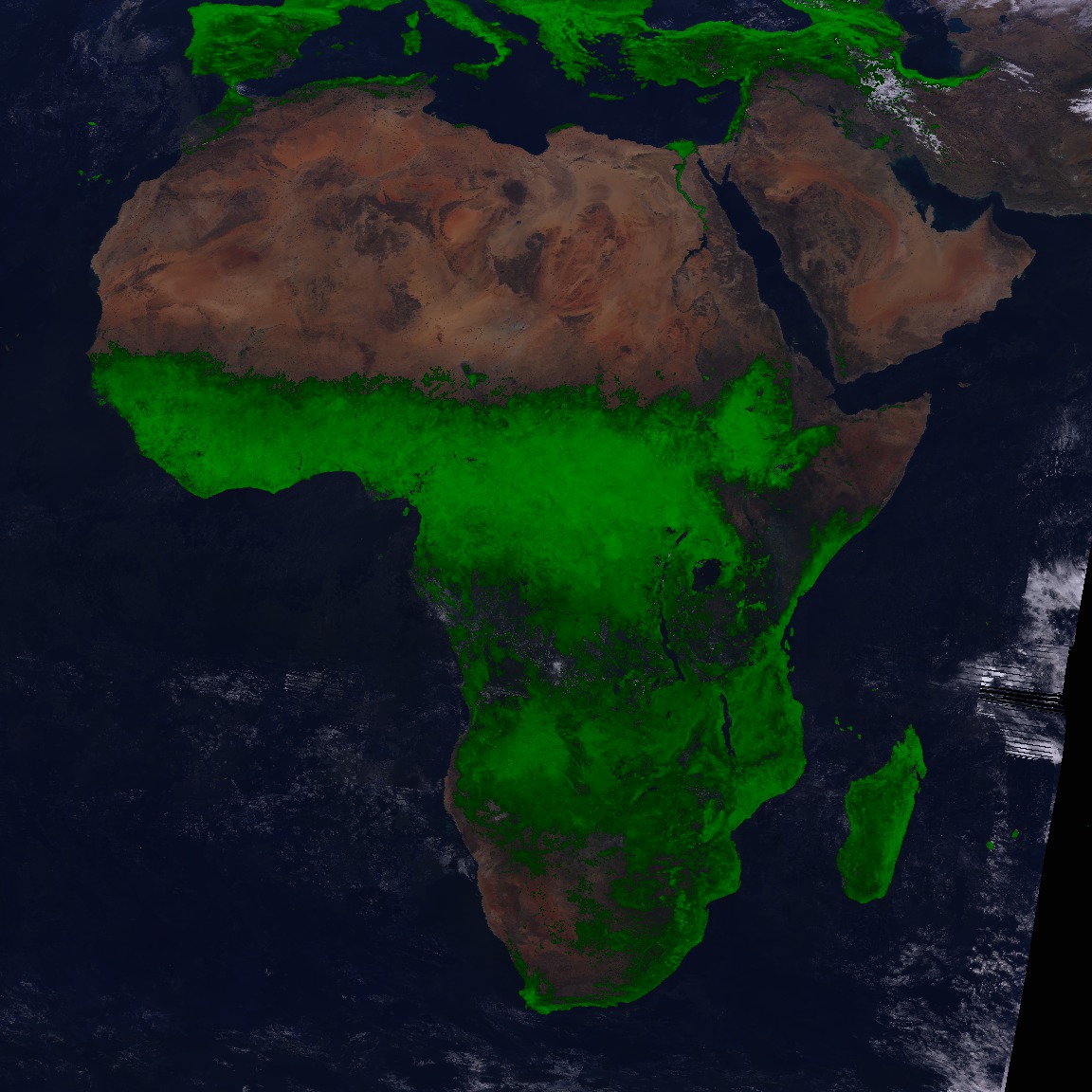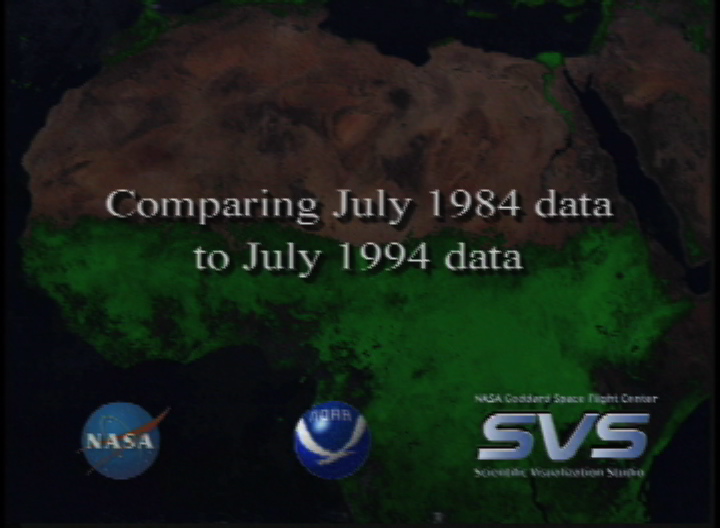Earth
ID: 589
For many years, scientists have believed that the southern expansion of the Sahara has been due to human activity. However, results from the AVHRR instrument and its measurements of vegetation suggest a different explanation: rainfall patterns. In drier years (1984 was one of the driest summers in recorded history in Northern Africa), the Sahara expands south, but in wetter years (such as 1994), vegetation moves back and there is no net expansion of the Sahara as had been previously suggested.





African Vegetation: Comparing July 1984 and July 1994





For More Information
Visualization Credits
Jesse Allen (Raytheon): Lead Animator
Compton Tucker (NASA/GSFC): Scientist
Sharon Nicholson (Florida State University): Scientist
Compton Tucker (NASA/GSFC): Scientist
Sharon Nicholson (Florida State University): Scientist
Please give credit for this item to:
NASA/Goddard Space Flight Center Scientific Visualization Studio
NASA/Goddard Space Flight Center Scientific Visualization Studio
Short URL to share this page:
https://svs.gsfc.nasa.gov/589
Data Used:
Note: While we identify the data sets used in these visualizations, we do not store any further details nor the data sets themselves on our site.
Keywords:
DLESE >> Climatology
DLESE >> Physical geography
SVS >> Sahara
GCMD >> Location >> Africa
NASA Science >> Earth
GCMD keywords can be found on the Internet with the following citation: Olsen, L.M., G. Major, K. Shein, J. Scialdone, S. Ritz, T. Stevens, M. Morahan, A. Aleman, R. Vogel, S. Leicester, H. Weir, M. Meaux, S. Grebas, C.Solomon, M. Holland, T. Northcutt, R. A. Restrepo, R. Bilodeau, 2013. NASA/Global Change Master Directory (GCMD) Earth Science Keywords. Version 8.0.0.0.0
https://svs.gsfc.nasa.gov/589
Data Used:
NOAA-8/AVHRR
1984/07NOAA-7/AVHRR
1984/07NOAA-12/AVHRR
1994/07NOAA-11/AVHRR
1994/07Keywords:
DLESE >> Climatology
DLESE >> Physical geography
SVS >> Sahara
GCMD >> Location >> Africa
NASA Science >> Earth
GCMD keywords can be found on the Internet with the following citation: Olsen, L.M., G. Major, K. Shein, J. Scialdone, S. Ritz, T. Stevens, M. Morahan, A. Aleman, R. Vogel, S. Leicester, H. Weir, M. Meaux, S. Grebas, C.Solomon, M. Holland, T. Northcutt, R. A. Restrepo, R. Bilodeau, 2013. NASA/Global Change Master Directory (GCMD) Earth Science Keywords. Version 8.0.0.0.0











